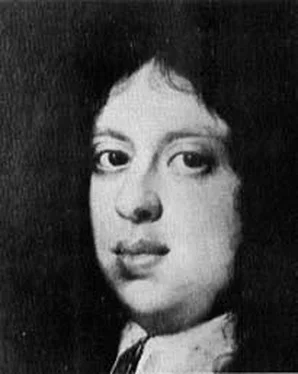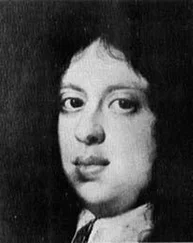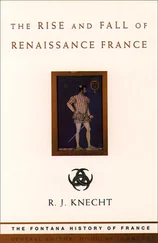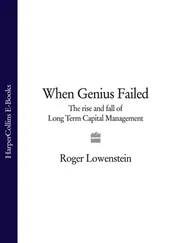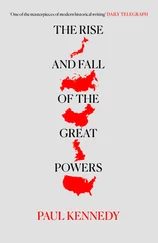Savonarola made this clear enough himself. ‘The Lord has driven my ship into the open sea,’ he declared in a sermon on 21 December.
The wind drives me forward. The Lord forbids my return. I spoke last night with the Lord and said, ‘Pity me, O Lord. Lead me back to my haven.’ ‘It is impossible,’ said the Lord. ‘See you not that the wind is contrary?’ ‘I will preach, if so I must, but why need I meddle with the government of Florence?’ ‘If you would make Florence a holy city, you must establish her on firm foundations and give her a government which favours virtue.’
It was a divine call which Savonarola was not reluctant to obey. In sermons of irresistible force he pointed the way and the citizens followed it. With crucifix in hand he urged the people to put to death all those who advocated the restoration of the Medici. God had called him to reform the city and the Church, and God’s will would be done. There must be continual fasting; the gold ornaments and illuminated books, the silver chalices and candlesticks and jewelled crucifixes must be removed from the convents and monasteries. ‘Blessed bands’ of children, their hair cut short, must march through the streets, singing hymns, collecting alms for the poor, and seeking out those rouge pots and looking-glasses, those lascivious pictures and immoral books, all those ‘vanities’ which were the Devil’s invitations to vice. These children must shame their elders into abandoning the gambling table for the confessional box; they must report to the authorities all infractions of the law, all examples of unbecoming or ostentatious dress, all other children who threw stones.
In future, carnivals must be religious pageants to the glory of God in whose name ‘vanities’ must be destroyed in sacrificial bonfires. And so they were. During one well-remembered carnival, processions of white-robed children marched through the streets, carrying olive branches and red crosses, singing hymns and dancing, ‘so that it seemed’ to Cinozzi that ‘the angels had come down to earth to rejoice with the children of men’. A statue by Donatello of Jesus as a boy, holding the crown of thorns in his hands, was carried from church to church. Later an enormous scaffold in the shape of a pyramid was erected opposite die Palazzo della Signoria. Around the base of the pyramid was arranged a garish collection of expensive dresses and fancy costumes once worn for masquerades, looking-glasses, velvet caps, wigs, masks, false beards, scent bottles and pomade pots, jars of rouge, beads, fans, necklaces, bracelets and trinkets of every kind. On top of these were piled profane books and drawings that might engender lascivious thoughts, chessboards and diceboxes, packs of cards and manuals of magic, busts and portraits of celebrated beauties; sensual pictures by Lorenzo di Credi, Botticelli and Fra Bartolommeo sacrificed by the now reformed artists themselves. At the very summit was an effigy of a Venetian merchant who had offered 20,000 scudi for the works of art now about to be consigned to the flames. The huge pile was surrounded by guards, and while the Signoria looked down from a balcony the whole was set alight. The flames rose to the chanting of a choir, the blowing of trumpets and the ringing of countless bells.
Naturally there were those who objected to such demonstrations of piety, who condemned Savonarola’s dedicated adherents as masticapaternostri (prayer mumblers) or piagnoni (snivellers). They beat drums and made ‘all sorts of noise’ to drown his voice when he was preaching, and they encouraged urchins to throw stones at his followers. But there were many more who saw Savonarola as a great reformer; who shared his dream of a world, simple and pure, in which all men would turn to Christ; who agreed with Cinozzi that Florence was then ‘a glorious place’; who, like Luca Landucci, were proud to have children among those ‘blessed bands and held in such reverence that everyone abstained from scandalous vice’; who, like Giorgio Vespucci, uncle of the navigator, and the Strozzi brothers, hoped one day to see Florence made ‘a new Jerusalem’.
King Charles VIII met little opposition on his march south. Rome fell without a struggle; and Ferrante’s son, King Alfonso II, terrified by weird dreams and portents, haunted by the ghostly victims of his brutality, and hearing the stones beneath his feet cry out ‘ Francia! Francia! ’, abdicated and fled to a Sicilian monastery. The French army crossed the Neapolitan frontier, massacring the people of Monte di San Giovanni and setting fire to the town as a warning of the dreadful fate that awaited all opponents. They filled the whole kingdom with the greatest terror, so Guicciardini said, by a way of making war that ‘had not been practised in Italy for many centuries’. Choosing to regard him as their deliverer from the House of Aragon, the Neapolitans gave Charles as enthusiastic a welcome as he had enjoyed in Florence. Indeed, the welcome of the people and the delights of their city were so beguiling that all thoughts of going on to Jerusalem as Charles had originally intended were now abandoned. The King settled down to enjoy the pleasures of his new domain and a succession of pretty mistresses, whose portraits he had bound together in a big book. But, as he languished beneath the Neapolitan sun, his rivals to the north were busily plotting his downfall.
None of these rivals was more active than the new Pope, Roderigo Borgia, Alexander VI. He was fat and bald, plain and flamboyant, yet it was not only his riches and his influence that made him attractive to women. He had an undeniable charm, an invigorating energy, a kind of childlike eagerness in his profligacy that endeared him to numerous mistresses. Like so many of his predecessors, he was determined to use his office for the benefit of his family, in particular for the advancement of his six sons of whom the sinisterly beguiling Cesare Borgia was the most talented and the most ambitious. But the Pope recognized that before these ambitions could be fully realized, an attempt must be made to unite Italy against the foreign invader. Accordingly he set about forming what he liked to term a Holy League, dedicated to the expulsion of the French.
It was an alliance that Lodovico Sforza was only too anxious to join. For Il Moro was now deeply regretting the consequences of having enticed the French into Italy where the Duke of Orleans, jealous of Charles VIII’s success in Naples, was making claims upon the Duchy of Milan. As well as Milan, Venice joined the Pope’s Holy League, so did the Emperor Maximilian, so did Ferdinand King of Aragon and Castile. Despite this threat to their position in Naples, the French army did not withdraw from the city immediately. It was not, in fact, until seven weeks after the Holy League had been established that Charles, leaving a large garrison behind him to hold the kingdom in his name, led his army north again.
It was a long, slow march. May passed and the whole of June, 1495. July began and still the French army, accompanied by a mule loaded with treasure to every two men, had not crossed the Appenines. By now the Holy League had managed to bring a strong army together under command of the fierce-looking, bulging-eyed Francesco Gonzaga, Marquis of Mantua. Slowly the two armies drew closer together; and this time there would be no deft avoidance as in the earlier fashion of Renaissance warfare. As Francesco Guicciardini observed, the French invasion had for ever ended those prolonged, choreographic campaigns so beloved by the old condottieri who had protracted their wars – as one of them, Jacopo Piccinino, himself admitted – in order to increase their pay, who had safeguarded their men by spending ‘most of their time retreating to the security of river banks and ditches’, who, when they had fought at all, had fought for prisoners rather than to kill. The picture of Italian warfare before the French invasion as a bloodless parade has, of course, been exaggerated. In the battle of Anghiari in 1440, for instance, about nine hundred men were killed, not ‘one man’ as Machiavelli claimed. But all the same, it was not unusual for engagements, in which thousands of men took part, to end without a single casualty and with congratulatory handshakes exchanged between the rival commanders. The Italian soldier fought bravely when he had to fight; but most of the time his commanders made sure that he occupied himself in plundering rather than in conflict, in driving cattle with his lance rather than in shooting at the enemy with his cross-bow. Troops of infantry pass through the pages of contemporary chronicles, wearing smart jerkins and parti-coloured tights, marching along to the music of drum and fife, occasionally shouting the name of the prince who paid them, looking more like strolling players than men of war. In sharp contrast, the soldiers of Charles VIII’s army were experienced, professional, trained to kill. ‘They would face the enemy like a wall without ever breaking rank.’ Above all, as Guicciardini said, they had brought with them
Читать дальше
